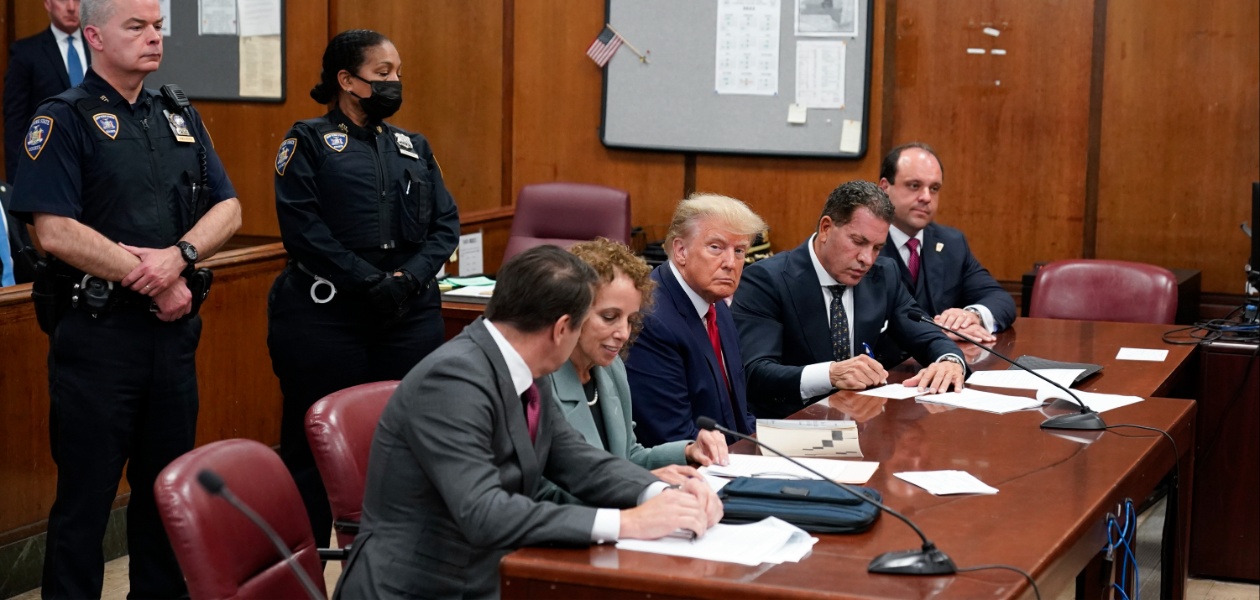
The indictment for which Donald Trump will be arraigned Thursday shows that he orchestrated an ongoing rolling coup that was already underway in November 2020 and continued even after the Jan. 6, 2021, attack on the Capitol.
- A reading of the 45-page indictment authored by Special Counsel Jack Smith shows that the first stage, in November 2020, involved carefully planned lawsuits from one end of the country to the other but concentrated largely in key swing states that Trump had lost.
- Soon after that, when the lawsuits failed, stage two went into effect. It involved elaborate plans to subvert the election by meddling with the electoral college system. California law professor John Eastman was one of a few who researched ways in which Trump could get away with throwing out legitimate electors representing the will of the people in the states and replacing them with Trump acolytes.
- The third stage involved a carefully planned operation to find state lawmakers, governors, and election officials in the states who were willing to overturn election results showing that Joe Biden had won the election.
- The fourth stage was enlisting people in Congress to get on board with the scheme. “All you have to do is say the election was corrupt,” Trump told the Justice Department and let us and the Republicans in Congress do the rest.
- The fifth piece of the plan involves a protracted and steady campaign to pressure Vice President Mike Pence to join the election overthrow effort.
- The sixth part of the plan was the development of a strategy to prevent the congressional certification of Biden’s victory on January 6 itself. The stages were often not consecutive in terms of timing but rather operated simultaneously.
In addition to clarifying the stages of the coup and the fact that they involved conspiracies that went well beyond Jan. 6, the indictments include evidence that Trump operated like a mafia chieftain, paying attention only to his own desires and ignoring evidence that he had lost the election presented to him even by his closest advisers.
Only a day after the Chief White House Counsel laid out the facts proving his loss, Trump turned around and tweeted that January 6 would be “wild,” urging his followers to show up in Washington to attack the Capitol. The invasion was preceded by a Trump speech that continued the lies that he had won the election despite the facts presented to him by the White House Counsel the day before.
The indictments from Smith include crimes committed in each stage of the plot outlined above. The one stage not included in the indictments, an idea the Trump people eventually decided not to pursue, was the discussions had by Trump and his close advisers about deploying the military to seize voting machines.
The indictments also shed light on the incredible number of Trump schemes that gave the OK to outrageous lies.
One such scheme involved a last-minute attempt to install the loyal and eminently unqualified Jeff Clark as the attorney general. Clark accepted the job offer, but unanimous opposition to the move by most of Trump’s own advisers resulted in him reneging on the deal.
The indictment shows that all the main Trump advisers knew he lost the election. In the early days of January, Rudolph Giuliani, co-conspirator number one in the Smith indictment, called John Eastman, co-conspirator number two, and told him that if Pence did what Trump wanted—blocking certification of the Biden victory—he would be violating the law.
Trump’s mafia-style threats to Pence when he refused to go along with the scheme to block certification were not the only ones issued. He also threatened Brad Raffensberger, the Georgia Secretary of State, with prosecution if he did not find the 11,000-plus votes needed to take the state away from Biden.
In the state of Michigan, sheriffs sent people to visit local election officials demanding they turn over voting machines so they could be “checked” to see if there were illegal Biden votes. The election officials were reluctant but eventually a number of machines were turned over to suspicious characters who were in fact not legitimate auditors.
The Trumpites ran so-called “forensic tests” on the machines. It was part of an effort to see whether it was feasible to throw out the Biden victory in that state on the basis that the machines had been tampered with. Needless to say, no proof of tampering was found, and the individuals involved in Michigan are now facing charges.
An important feature of the Smith indictment is that it relies on the so-called “Ku Klux Klan Act,” which was used long ago to stop the Klan from intimidating voters. The indictment charges Trump with attempting to take away the right of the people to vote and have their votes counted. The last time the federal government charged people with this crime was when they used the Civil Rights law to stop the KKK from terrorizing Black voters.
Trump’s attack on the rights of Black people is a consistent and marked feature of the Smith indictment. Many of the Trump crimes he lists were committed in Detroit, Atlanta, and Philadelphia and were specifically attacks on the voting rights of Black people in those cities.
The Big Lie that he had won the election is itself a racist one because it results disproportionately in taking away the votes of Black people. The focus of so many of the Trump crimes against democracy was on communities of color across the country.
We hope you appreciated this article. At People’s World, we believe news and information should be free and accessible to all, but we need your help. Our journalism is free of corporate influence and paywalls because we are totally reader-supported. Only you, our readers and supporters, make this possible. If you enjoy reading People’s World and the stories we bring you, please support our work by donating or becoming a monthly sustainer today. Thank you!












Comments